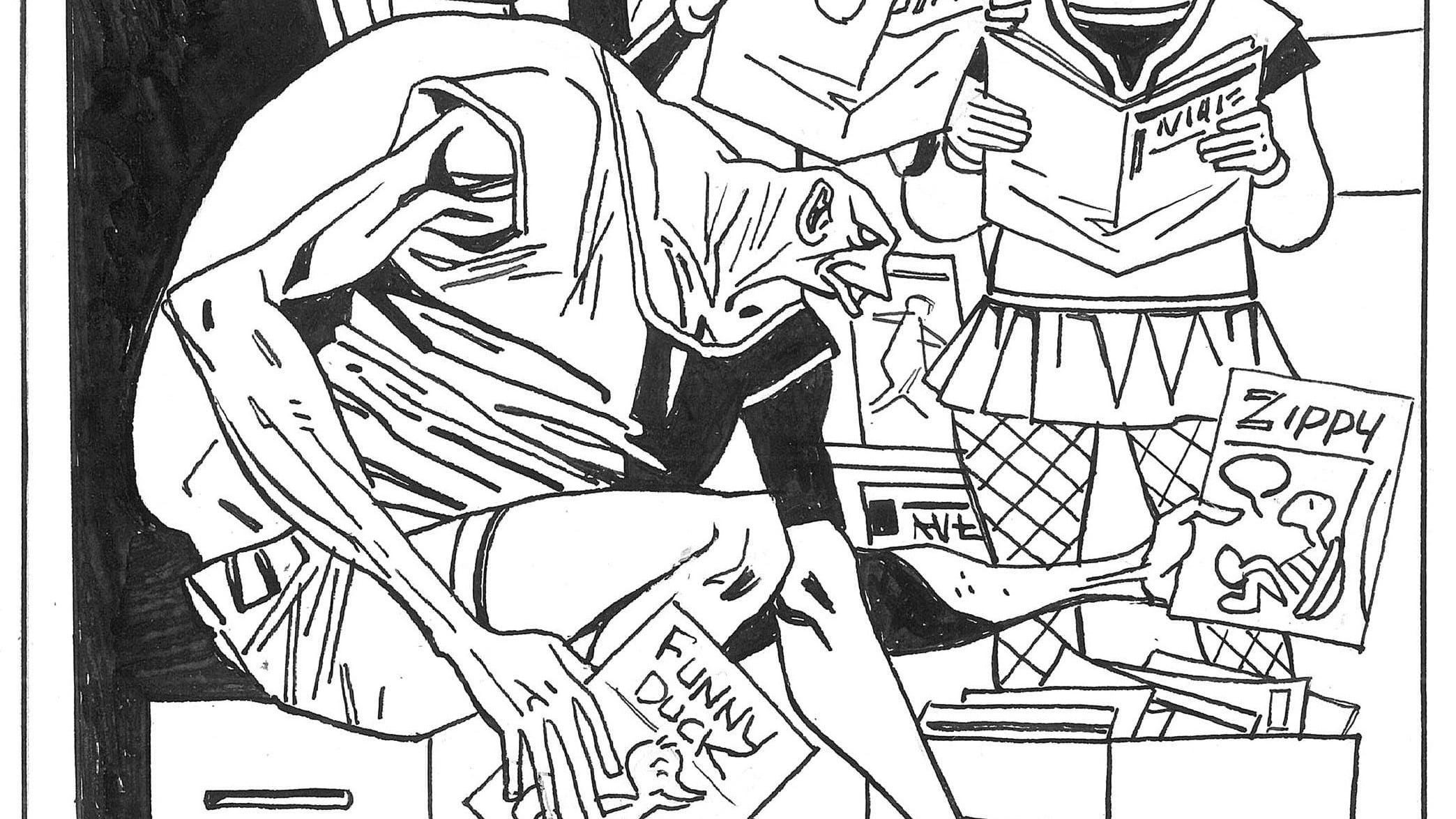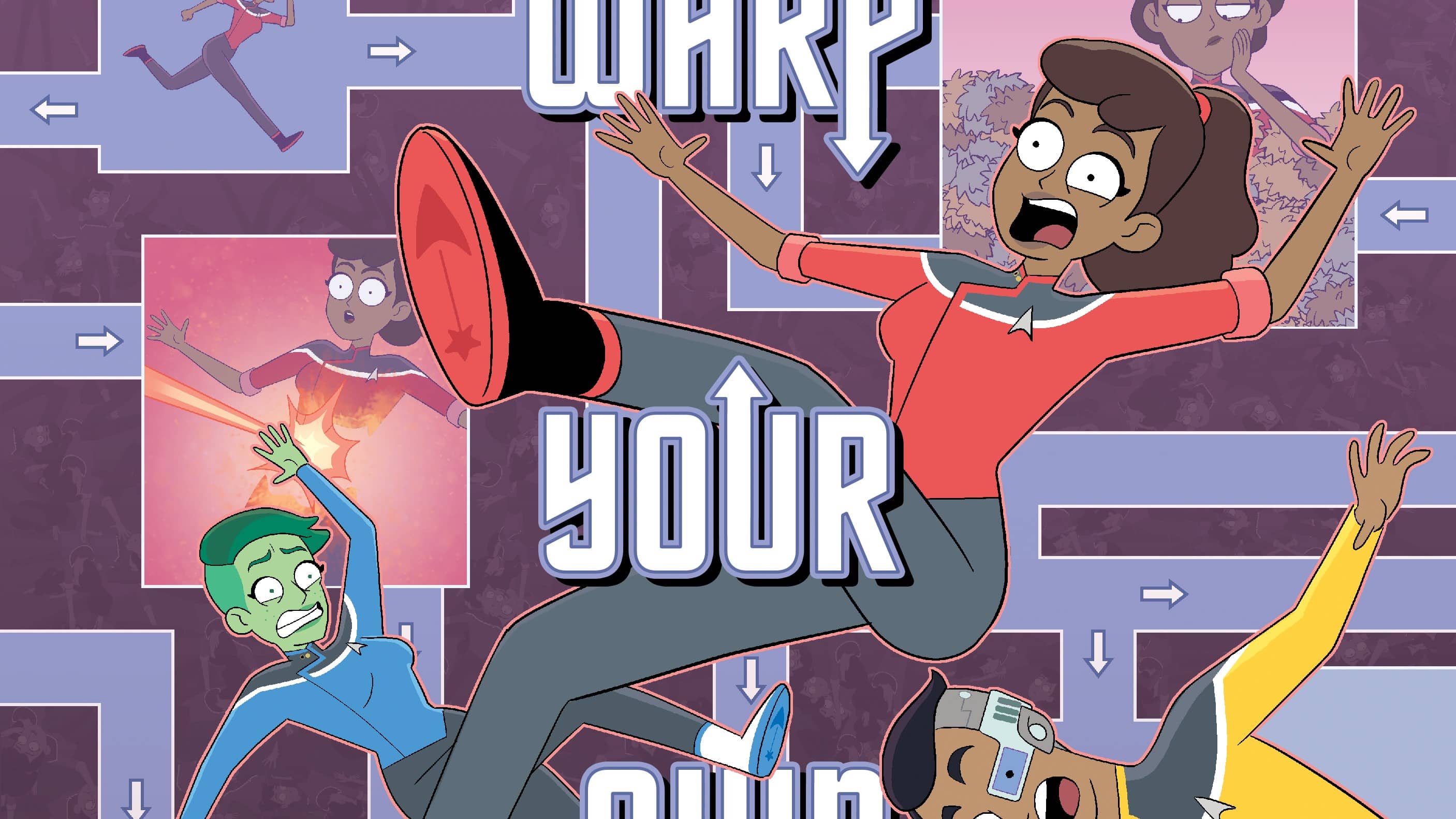Two weeks ago, Jon Adams’ long-running webcomic Chief O’Brien At Work ended its 12 year run. In more than 400 entries, the comic featured a largely static image of Chief O’Brien as he waits for someone, anyone, to need the transporter, or, failing that, a friend. With mostly unseen supporting characters like Keiko, Commander Riker, Geordi, Data and Wesley Crusher, Interdimensional Bachelor, the comic provided a depressingly hilarious counterpoint to the normally inspiring adventures of the Enterprise crew. I recently caught up with Adams via email to ask him a few questions.
This interview has been edited for length and clarity.
Mark Turetsky: First off, thanks so much for taking the time to talk with me. A bio I found of you online mentions that your education was in hotel management. How bad must the hotel management scene have been that you pivoted to illustration?
Jon Adams: I have a very common name, and people often confuse me with another Jon Adams who also makes comics. He has a hotel management degree. My degree is actually in motel management, a very similar but different discipline.
Mark: Did you study art formally?
Jon: I never studied art formally. I began drawing as a child, like all kids do, and unfortunately no one ever told me to stop.
Mark: Looking over your portfolio, your illustrative style is so clear and distinct that I feel like I can pick out your work even when the art is far from what I’d classify as “cartooning.” What do you think makes your style so distinctive? Is it the incredibly consistently fine line weight? Your sense of color?
Jon: Thanks! I’m not sure what makes me, me, but I’m happy that I have a distinctive style. There are a lot of wildly talented artists out there who lack a strong voice. I’m happy that whatever I lack in talent I at least make up for with a unique voice.
Mark: Your comic strip Truth Serum seems to be largely unavailable (the site’s domain now points to your portfolio). What was that comic all about? How did it get started?

Jon: It’s still very available in book form on eBay or probably in dusty back issue bins. It began as a three-issue series from Slave Labor, then later I collected and self-published it along with a long-form comic that had run on Dark Horse’s site. That collection got two Eisner-nominations but lost to, I think, a Batman comic or something. There were two more books after that. The second book collected another series that ran on Dark Horse’s site, and the third collected some of the webcomic I began doing on my own. It was essentially just a bunch of superheroes and the mundanity of their lives living in suburban Connecticut, but it was also partly autobiographical.
Mark: The mundane clashing with the exciting certainly sounds thematically connected to Chief O’Brien. Especially since we only (mostly?) ever see the dullest part of the transporter room, and not the exciting part where the actual special effects happen. You’re currently based out of San Francisco. Did you grow up in suburban Connecticut? Was Chief O’Brien pulling on that same sense of suburban angst?
Jon: Oh, trust me, there was no clash with exciting moments. There were no exciting moments to clash with. And yes, I grew up in Manchester, CT, which is known for a highway that passes through it and a 60 Minutes piece about a murder that occurred maybe 40 years ago. In many ways I would say Chief O’Brien is very much an extension of the themes I explored in Truth Serum.
Mark: In another interview, you mentioned that while you have some love for The Next Generation and Deep Space Nine, you’re not really a fan of Trek overall, and didn’t get into the subsequent series. Has this changed in the subsequent years? Did you give Lower Decks a shot, considering it has a very clear homage to your comic?
Jon: To be clear, I dearly love the characters of The Next Generation, though I don’t think the writing was as strong as it could have been (although the Mark Twain episodes I think are brilliant). Deep Space Nine had stronger writing but I didn’t relate to the characters as much (though I’d gleefully watch a show that was just Quark and Odo, and I cried when they said goodbye to each other in the finale).
Mark: I’d like to point you to this bootlegged outtake from that very scene that I believe Armin Shimerman shows at some of his con appearances.
Jon: Thank you for that, I think. I’m praying my brain doesn’t decide to remember that as the canonical ending.
The other shows I tried, but could never get into — Lower Decks being the exception. That’s obviously a very different type of show.
Mark: Chief O’Brien At Work began back in 2013, and no matter how consistent an artist’s style, it’s bound to develop and evolve somewhat over time. While most of the artwork of the comic is re-used, you do sometimes add new elements, new locations, new characters, sometimes redesigning O’Brien himself into something hideous for a run of comics. Did you ever find yourself having to adjust your style to something more like what you were doing 12 years ago in order to keep things consistent?

Jon: Oh absolutely. When creating new elements for the strip I generally tried to simplify my art a bit to keep it from being too incongruous with the initial drawing of Chief O’Brien, which was drawn rather hastily. Had I known I’d be using that drawing for 12 years I probably would have approached it differently.
Mark: Stylistically, Chief O’Brien At Work reminds me of Ryan North’s long running Dinosaur comics, where the art remains exactly the same from comic to comic, but with new dialogue each time. Obviously, Chief O’Brien At Work wasn’t quite that strict, but it’s usually constrained to one space, one set of images, with maybe a few slightly changed facial expressions for its hero. How did those constraints help or hurt the storytelling possibilities of the comic?
Jon: Having this constraint helped a ton because it made my life so much easier. If I had to draw a different scene or angle every panel the comic never would have happened. I draw slowly and in many cases don’t enjoy the process very much, so having the work done in advance made it all possible. But aside from my own self interests, having almost nothing change from panel to panel really drives home the entire point of the comic, which is the unending monotony of his job. There’s literally no reason for him to move or change.
I would get occasional complaints from people saying the comic they read for free each week was lazy because the art didn’t change. As if writing didn’t require any work. That perspective just highlighted how much they didn’t understand the comic or value the time I put into it. I’m assuming those comments were from ten-year-olds. That’s the only real explanation.
Mark: Not to get all academic, but it owes something to some of the playwrights of the last century, like Samuel Beckett, whose work is often classed as existentialist or absurdist: life is unending tedium, changing only very slowly, and usually for the worse. I do appreciate that this limited need for new art allowed you to, say, begin the printed collection with five uninterrupted pages of O’Brien waiting (he turns his head for a few panels near the middle in order to break up some of the tedium).
Jon: Oh, I was so happy when I got to do that, and am glad you appreciated it. It’s something I couldn’t have done as easily with the online version. I don’t think people would have had the same patience for it in that context. I often try to start some of the individual strips with one or two silent panels if I have space, just to offer context.
Mark: You started drawing cartoons for The New Yorker partway through Chief O’Brien’s run. How did that come about? Was someone there a Chief O’Brien fan?

Jon: The New Yorker came about separately, I don’t think anyone at the magazine knows about my Chief O’Brien comics. My high school friend Emily Flake is a longtime New Yorker cartoonist, and she allowed me to name-drop her when I submitted some cartoons. I was fortunate enough to sell one on my first try. The Chief O’Brien book did however get me some work at Marvel. There were a couple of editors there who had supported the Kickstarter, and the book got shown around the offices a bit.
Mark: The Kickstarted collection of the first few hundred Chief O’Briens has been consigned to never be reprinted, thanks to some intervention from CBS’ IP lawyers. But there are clearly some folks on the creative side of the company who enjoy your work. Have you ever been approached to write or draw anything for Star Trek in an official capacity?
Jon: No, goddamnit. I dream of one day having the entire series reprinted in an official capacity. A lot of people have asked for that.
Mark: Episode 400, the finale, seems like a nod, or perhaps a rework of episode 9, which served as the original ending of the comic, back before it got widely circulated and went viral, leading to a huge demand for more of Miles’ “adventures.” Why the repeat? Was it because you had thought of a way to make this ending even more bleak?
Jon: To be honest, after 12 years and 400+ strips, I don’t remember all of them. If there are any repeat jokes or similar ideas, it’s because of my poor memory. But the ending is intentionally open to interpretation. I wanted it to be a little ambiguous, and I’ve heard some really interesting theories from readers that I hadn’t considered myself. I think what’s nice is that even I don’t know exactly what happened to him.
Mark: Maybe this time he’ll break free and finally make it to Deep Space Nine. You never know! You’ve mentioned in the past that you would stop making Chief O’Brien At Work “when it stops being fun.” Has that time come?
Jon: It’s still fun, but I don’t have the time or enthusiasm for it that I used to. There were a couple of longer storylines where he wasn’t in the transporter room—one where he’s trapped in a space coffin, and one which was basically a spin-off called Wesley Crusher: Interdimensional Bachelor. With those stories I’d gotten to a point where I just needed to switch things up a bit to keep the comic interesting to me. I can imagine returning to the comic at some point, maybe if I have some ideas for a longer story, but for now it’s done.
Mark: Do you have any new strips on the horizon that we can look forward to?
Jon: Not at the moment. My main focus these days is on New Yorker cartoons. They’re the most fun for me, and I actually get paid for them.
Mark: At least some companies are still willing to fund comics!
Thanks for your time, Jon, I truly appreciate it.
Mark Turetsky is an audiobook narrator and voice actor who sometimes writes about comic books. Originally from Montreal, Canada, he now lives in Northern Louisiana. Follow him @markturetsky.com on Bluesky.






